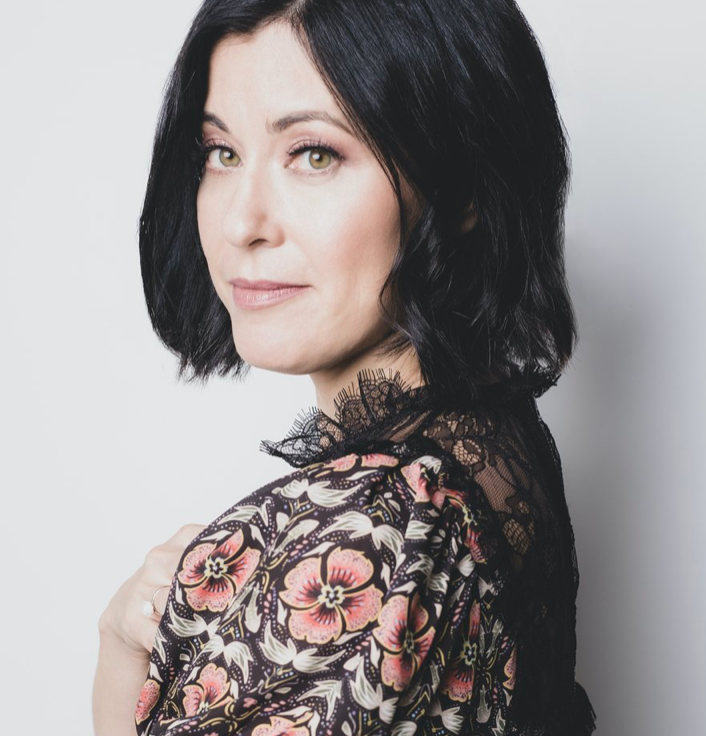|
Symphony
FROM THE NEW WORLD TO THE OLD WORLD
by Peter Lert
Saturday, June 14, 2025
Chamber
MC2 DUO RECITAL CLOSES 222'S SEASON
by Terry McNeill
Saturday, June 14, 2025
Choral and Vocal
CANTIAMO SONOMA'S LUSCIOUS A CAPELLA SINGING IN SEASON ENDING CONCERT
by Pamela Hicks Gailey
Sunday, June 8, 2025
Symphony
SRS SEASON ENDS WITH RESOUNDING TA-TA-TA-BANG
by Terry McNeill
Sunday, June 1, 2025
Symphony
YOUTHFUL VIRTUOSITY ON DISPLAY AT USO'S MAY CONCERTS
by Peter Lert
Saturday, May 17, 2025
Symphony
MYSTICAL PLANETS AND LIVELY GERSHWIN ORTIZ AT FINAL SRS CONCERT
by Peter Lert
Sunday, May 4, 2025
Symphony
VSO'S CONCERT MUSIC OF TIME, MUSIC OF PLACE
by Peter Lert
Sunday, April 27, 2025
VOCAL ELEGANCE AND FIRE AT THE 222'S RECITAL APRIL 26
by Pamela Hicks Gailey
Saturday, April 26, 2025
CANTIAMO SONOMA SINGS AN INSPIRED GOOD FRIDAY MOZART REQUIEM CONCERT
by Pamela Hicks Gailey
Friday, April 18, 2025
DRAMATIC SHOSTAKOVICH SYMPHONY CLOSES PHILHARMONIC'S 25TH SEASON
by Terry McNeill
Sunday, April 13, 2025
|
 |
 Violinist Jennifer Frautschi |
FROM THE DANUBE TO PUERTO RICO
by Steve Osborn
Sunday, March 26, 2023
What can be sandwiched between two waltzes and followed by a concerto? The answer is a short symphony. Or at least that was the answer given by the Santa Rosa Symphony during its March 26 program in Weill Hall. The waltzes were the canonical “Artist’s Life” and “Blue Danube” masterpieces by Johann Strauss II; the concerto was Saint-Saëns’ third violin concerto, with soloist Jennnifer Frautschi; and the short symphony was Sinfonia Isleña (Symphony of a Small Island), by contemporary Puerto Rican composer Angélica Negrón.
The concert got off to a rousing start with an assured performance of the "Artist's Life" waltz, where the orchestra swiftly displayed the kind of rhythmic flexibility needed to make a waltz dance off the stage. While a waltz is nominally in 3/4 time, the custom is to bring the second beat closer to the first. This minute adjustment makes for a livelier, less predictable waltz.
Substitute Concertmaster Jay Zhong led the strings with exaggerated bowing. At one point, his upbows were so pronounced that he seemed to be lifting off his chair.
All players were still on stage when Ms. Negrón introduced her symphony by explaining that it’s a series of sonic landscapes from Puerto Rico and is divided into four movements: Skies, Oceans, Mountains, and Flora.
“Skies” opened with a single reverberating note from the back of the orchestra; it was hard to tell if the source was natural or electronic. The single note soon expanded into a chord played by most of the visible orchestra. As the orchestra softened, the percussion section created unique sounds by slowly balling up pieces of thick white paper.
The second movement, “Oceans,” also opened with sound from a hidden source, this time a MIDI keyboard followed by recorded waves. The waves morphed into flowing strings floating on top of an insistent bass line. The strings soon stopped flowing and resorted to muted arpeggios. The waves, which had been breaking all this while, came to an abrupt end, and with them the movement.
The third movement, “Mountains,” brought Ms. Negrón’s working methods to the fore. The percussion section played a distinctive pattern, which they traded back and forth with another pattern played by the strings. After several repetitions, the winds replaced the percussion, so the strings started trading with the winds. The structure of this movement helped one realize that the “Symphony of a Small Island” is composed of recurring patterns. The challenge is to make the patterns into building blocks rather than discrete events.
The last movement, “Flora,” dispensed with an electronic introduction and kept itself firmly planted within the orchestra. The same compositional method of developing patterns was still at play, but here the orchestration became wonderfully dense, with remarkable sounds emanating from the stage.
Following intermission, conductor Francesco Lecce-Chong bounded onto the stage and began “The Beautiful Blue Danube” with a quiescent tremolo from the upper strings. This delicate sound offered a perfect foil for the brass, which shortly entered with the melody. The ensuing performance had all the vim and vigor of the preceding version of “Artist’s Life,” but with a few more highlights.
The players seemed quite relaxed and caught up in the flow of the waltz. Mr. Zhong continued to make pronounced bowing motions, and the first violins played their embellishments with élan. Meanwhile, Mr. Lecce-Chong used his restrained gestures to maximum effect, soliciting some well-placed crescendos and ritards. The waltz sailed along intrepidly until reaching the sweet trumpet solo at the end.
After the applause settled down, soloist Jennifer Frautschi emerged from the Danube in a shimmering silver lamé dress to play the Saint-Saëns. She displayed a massive tone in her opening bars and appeared unfazed by the orchestra’s matching fortissimo. She played her instrument ramrod-straight, with only an occasional sway. She also changed her vibrato for different passages, making them indeed quite different. Most notably, she took certain rapid passages at only one note per bow, resulting in bowing speeds worthy of a race car.
Having established her considerable presence in the first movement, Ms. Frautschi opened the second with a beautiful melody that lingered in the air. She used the entire range of her strings and fingerboard to further the tune, introducing some trills and more varieties of vibrato along the way. The movement culminated in a magical hushed moment way up on her E string, followed by a haunting series of harmonics.
The last movement opened with more bravura playing by Ms. Frautschi, followed by a strong musical interchange with the orchestra. In an uncharacteristic move after finishing a pizzicato phrase, Ms. Frautschi seemed to glare at the strings as if daring them to respond. Despite any potential rivalries, Ms. Frautschi settled into a long solo with orchestral backup that took her to the end of a dazzling performance.
|

